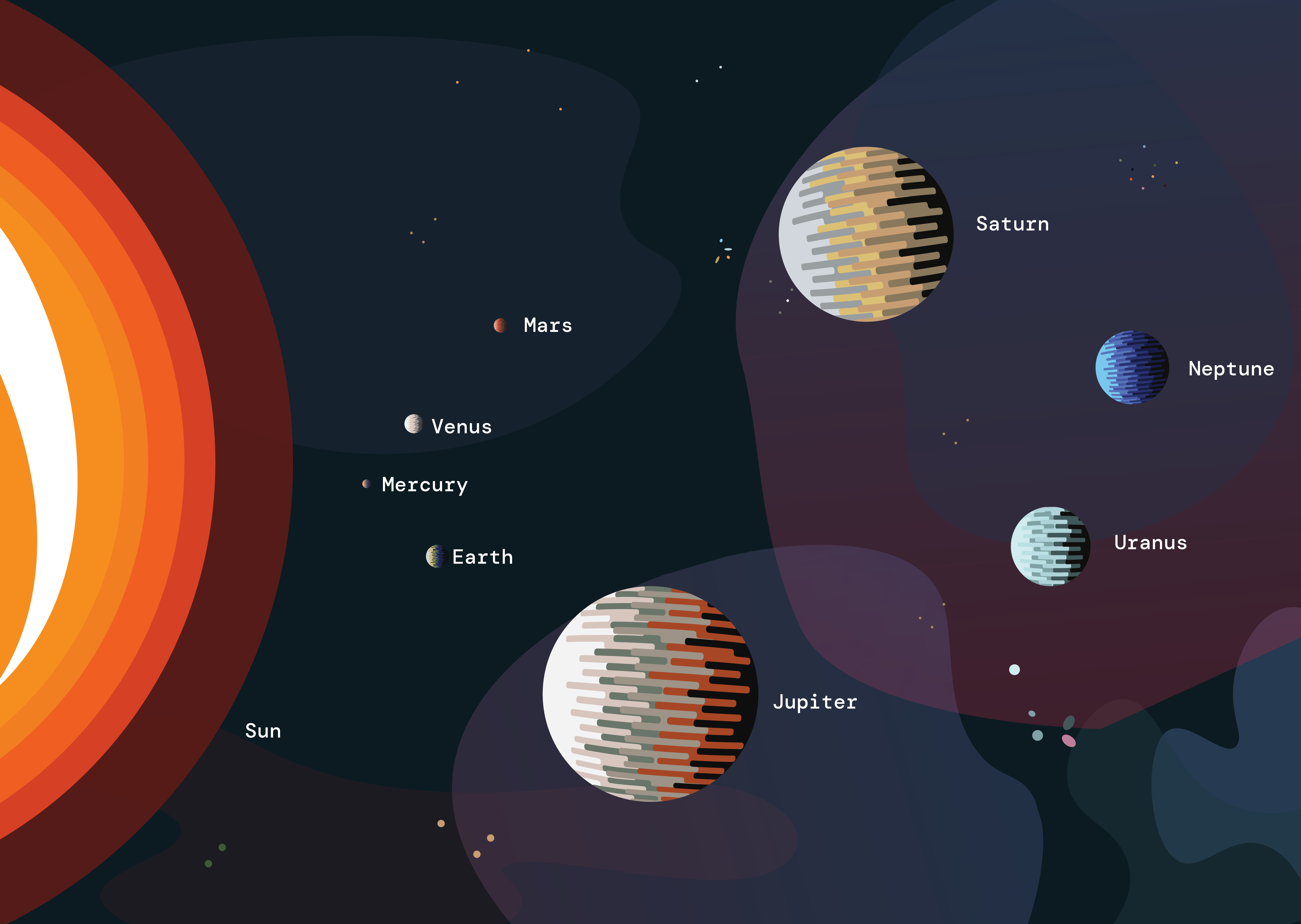
Deep Space _ Search of Earth 2.0
Deutsch
Vision
A child wakes up in the morning and looks out of the round windows of its pressurized cabin at the desolate and reddish desert landscape of his home. Surrounded by regolith and rock walls of a crater, lies the sheltered settlement where it lives with his family and other settlers. On the horizon, sand clouds drift across the rusty ground, swirling up small loose stones and leaving behind a dusty atmosphere. Sandstorms like smaller dust devils or even monster storms, are not uncommon. Every few sols they devastated the settlers first attempts to build a permanent housing on the surface of this planet pushing them back to large underground tunnel systems.The child looks to the side at a hologram representation of a bluish planet that its people always refer to as their first and abandoned home. This was never its planet, it has always lived here and was created here.
It's home is the planet Mars.

Beyond Earth
"Deep Space" is based on a hypothetically developed vision of the future on the planet Mars in the year 2100, assuming a dystopian past of the planet Earth and humanity and defines it as a search for Earth 2.0. In order to examine and ultimately interpret the vision presented in this thesis, Deep Space builds on fundamental knowledge of astronomy and space travel. It questions and outlines realistic, as well as unrealistic, science fiction-sounding survival options beyond Earth. Survival technologies and their prerequisites and long-term effects are considered and explored that may allow humans to adapt and establish colonies under different and divergent planetary conditions, prerequisites, and states over the long term. On a web page, supported by many information graphics, the work formulates and outlines a realistic way to stabilize the human system.
Website Deep Space
Mission Earth 2.0
The 4.6-billion-year-old planet Earth was the first home of our human species. It was once the origin of all life forms and creatures known at that time.
"Humanity means war" - This was the message from people all over the continents in the middle of the 21st century. As a result of political unrest, racism, dictatorial conditions, capitalism and general differences across continental borders, global, political and social challenges arose. Among other things, there was the abrogation of the Treaty on the Non-Proliferation of nuclear weapons and bombs. The consequences were decades of global nuclear and digital attacks and wars between world powers. The focus of media information dissemination was on the grave consequences of nuclear warfare, while the ecological, rapidly deteriorating state of the Earth took a back seat. The species lost sight of nature for decades. 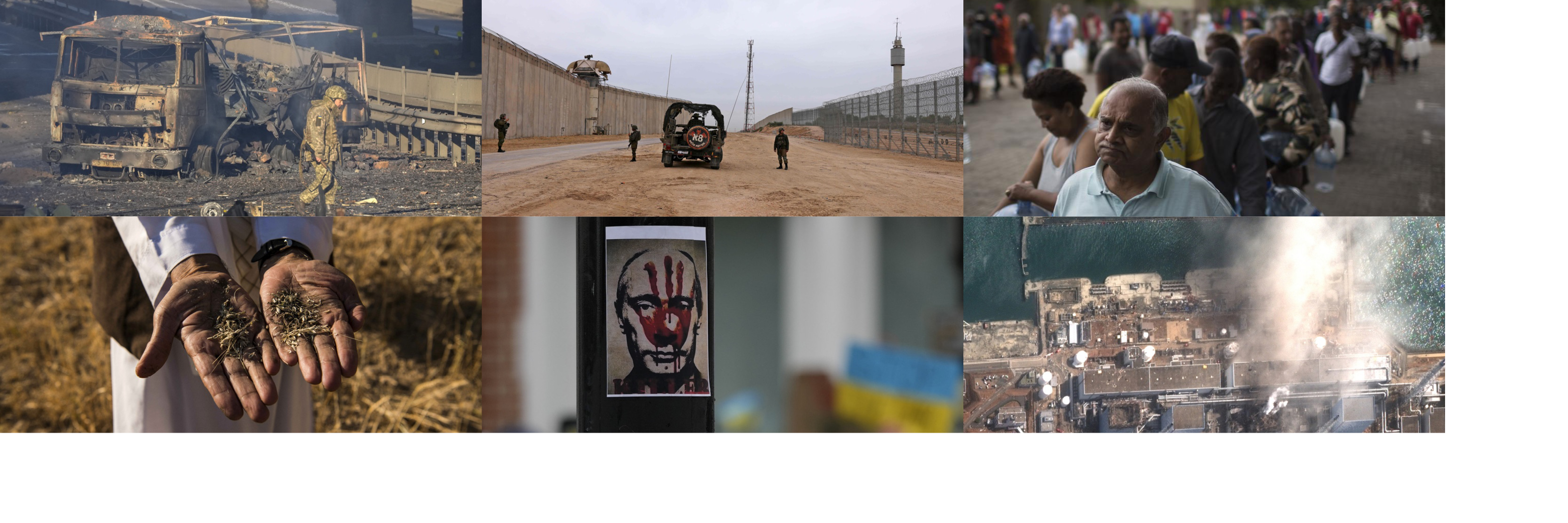 Dry regions became drier and drier, wet regions wetter and wetter. Forest fires, melting polar ice caps, rising sea levels, contaminated drinking water sources, a sharp decline in populations and the loss of general terrestrial biodiversity could already be observed in the 2030s. By the mid-21st century, the Earth was covered by over 70.7% water surface. Due to the consequences of climate catastrophes, sea levels rose sharply, causing the area of the oceans to increase to 96.5% from the 70.7%. The rivers and lakes, which can be used as drinking water, decreased to 3.5% of the total 70.7%, which is not enough for the population. The percentage of the habitable surface of the earth was populated by humans and influenced with excessive and commercial agriculture, urbanization, resource exploitation through mass consumption and transportation road construction. Humans almost completely wiped out nature.
Dry regions became drier and drier, wet regions wetter and wetter. Forest fires, melting polar ice caps, rising sea levels, contaminated drinking water sources, a sharp decline in populations and the loss of general terrestrial biodiversity could already be observed in the 2030s. By the mid-21st century, the Earth was covered by over 70.7% water surface. Due to the consequences of climate catastrophes, sea levels rose sharply, causing the area of the oceans to increase to 96.5% from the 70.7%. The rivers and lakes, which can be used as drinking water, decreased to 3.5% of the total 70.7%, which is not enough for the population. The percentage of the habitable surface of the earth was populated by humans and influenced with excessive and commercial agriculture, urbanization, resource exploitation through mass consumption and transportation road construction. Humans almost completely wiped out nature. 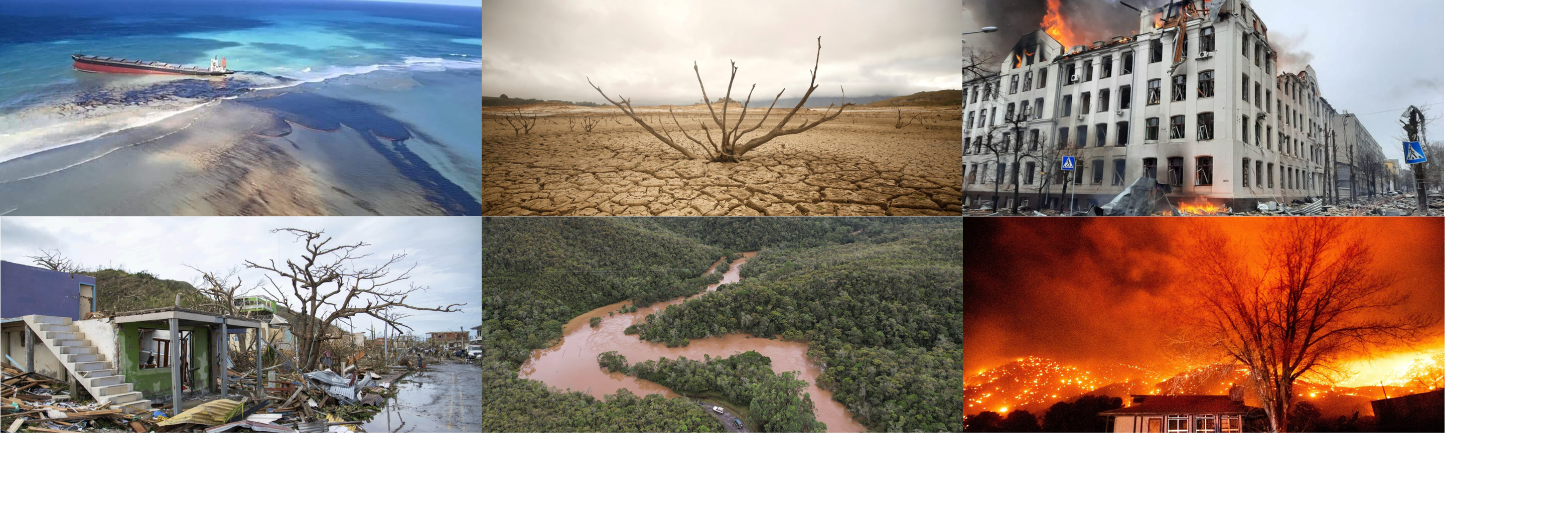 The ecological footprint grew exponentially, while massive consumption in all areas of life shaped an individual's apparent wealth, attempting to blank out the current suffering of humanity.
The ecological footprint grew exponentially, while massive consumption in all areas of life shaped an individual's apparent wealth, attempting to blank out the current suffering of humanity.
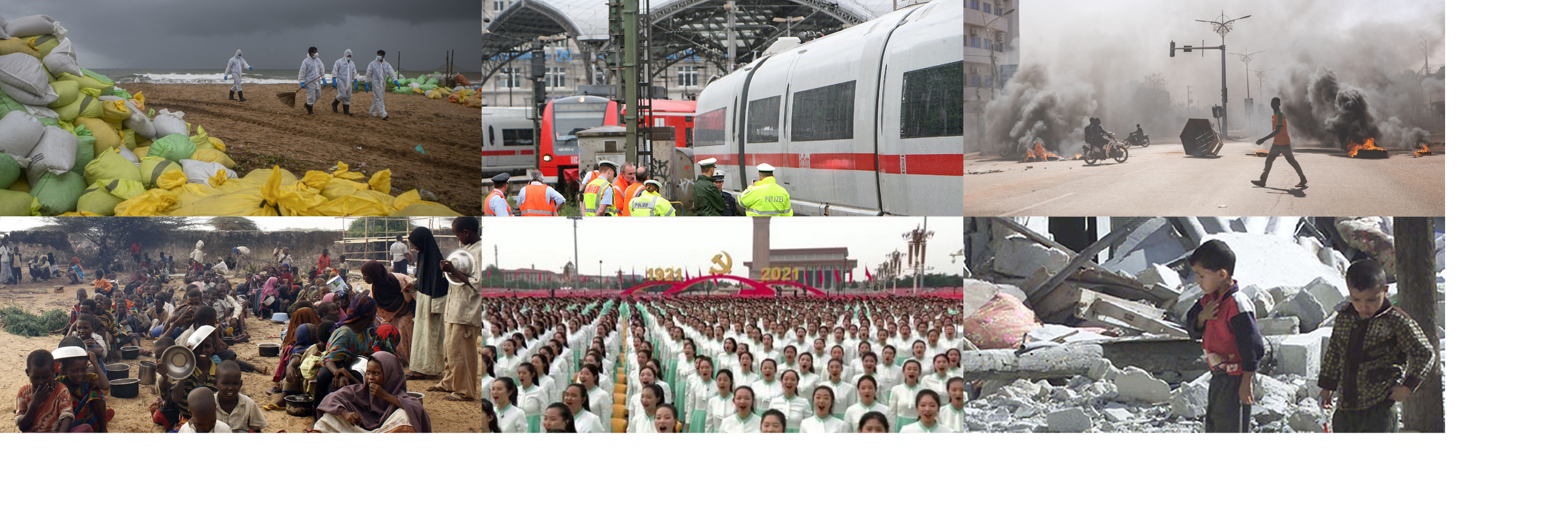
Today, the once blue planet is orbited by a ring of satellites, probes, and junk; the hazy, dusty, and polluted atmosphere only allowing a glimpse on a dystopian looking past. On the surface, piles of garbage tower higher than skyscrapers, lined up next to non-functioning wind and nuclear power plants and the abandoned, post-apocalyptic urban and rural structures. The effects of the events of war can still be felt.
Earth 2022

Earth 2100

Colors of the Universe - Digression

In using optical instruments to create the 2dF glaxy redshift map, astonomers and cosmologists KG and IV discovered the color of the universe. As a byproduct, the imaging of over 200,000 galaxies produced a color comparable to the average measured color of galaxies. After initial measurements, a pale turquoise was considered the color of the universe. A few months later, the color was corrected due to an initially miscalculated white balance and called beige. The exact name of the color is cosmic latte, color code: #FFF8E7.
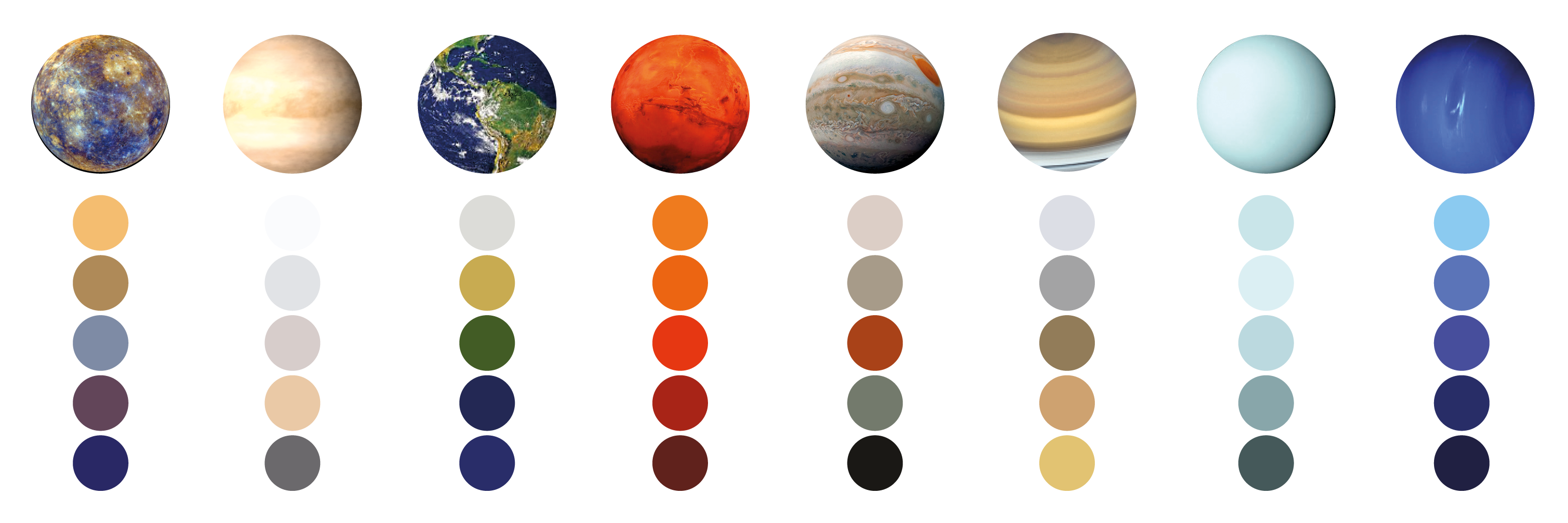
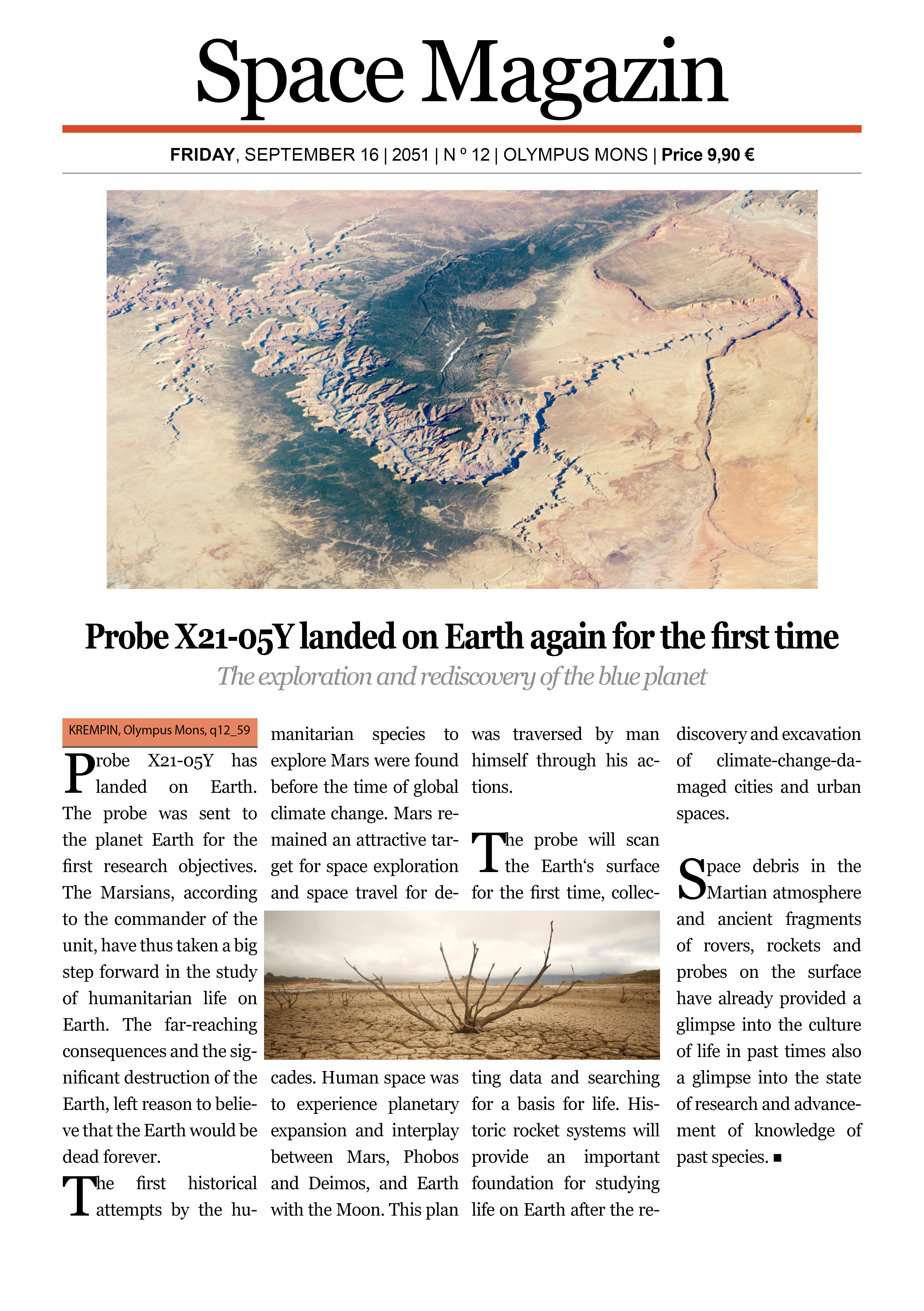
2 Million People Colonize Mars
The future of Earth... of humanity, of us humanitarian species, lies in the stars. If humanity fails in gaining a foothold outside our home planet and adapting to other places and circumstances in the long term, humanity, we, nature, flora and fauna, our livelihood, will become extinct. If humans cannot settle in extraterrestrial space and continue to live and consume on planet Earth under current planetary conditions, Earth will not remain habitable for eternity.
Spacelift
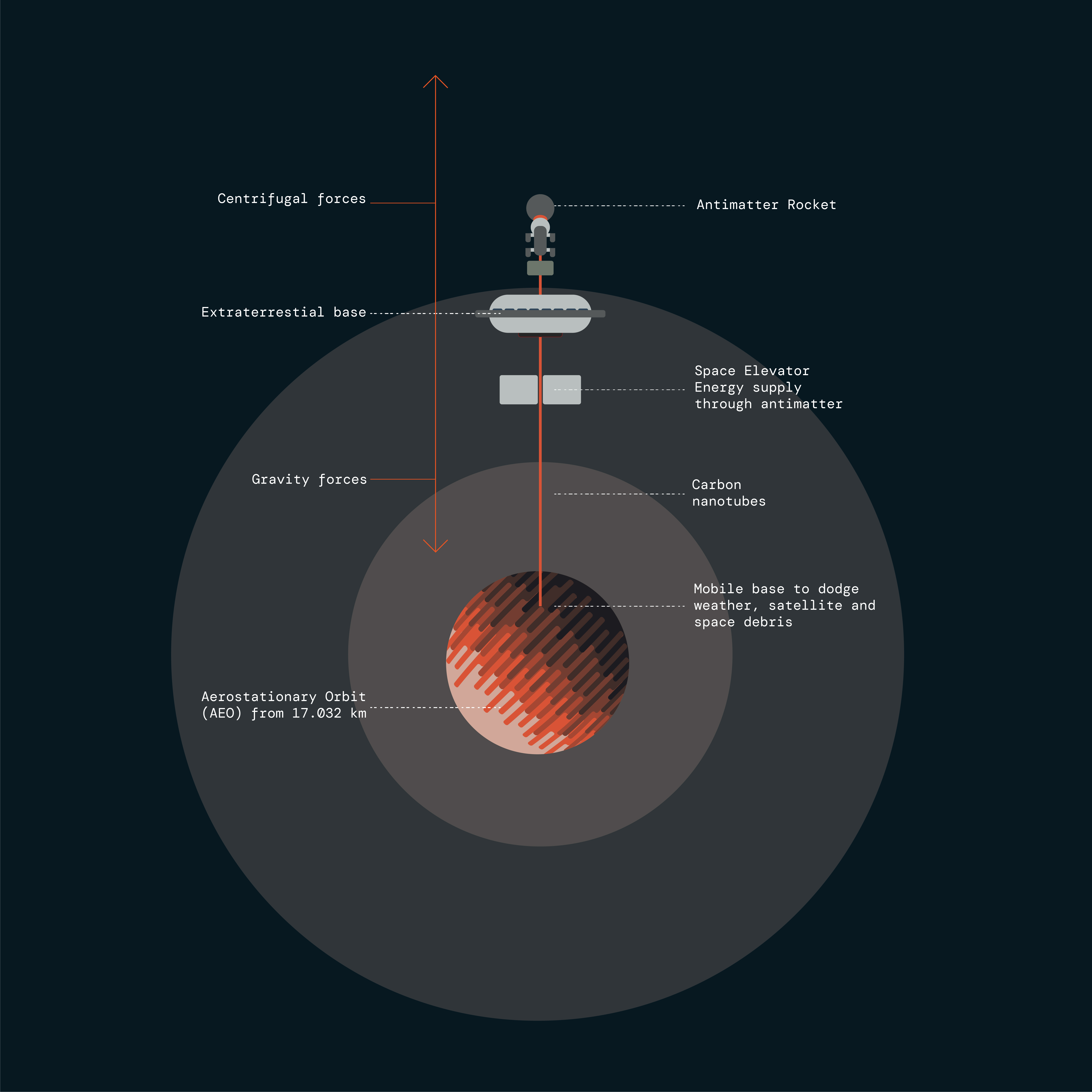
Mars Rover
.gif)

.jpg)
.gif)
Potential Hazards in Mars Missions
Catastrophic failure
3/4 of all Mars probes did not reach their target
Distance problem
Radiation
Mechanical failure
Communication loss
Micrometeorites
Muscle and bone structure disorders
stretching the spine in space
Bone mass loss
Deterioration of vision
Cosmic rays
Occurrence of kidney stones
Solar wind
Cancer risk
Premature aging due to radiation doses
Flashes of light in the field of view when subatomic particles ionize the fluid in the eyeball
Irreparable brain damage
Increasing brain pressure
Threat of solar flares
Micrometeors
Psychological problems
Permanent molecular change of the body
Exoplanets
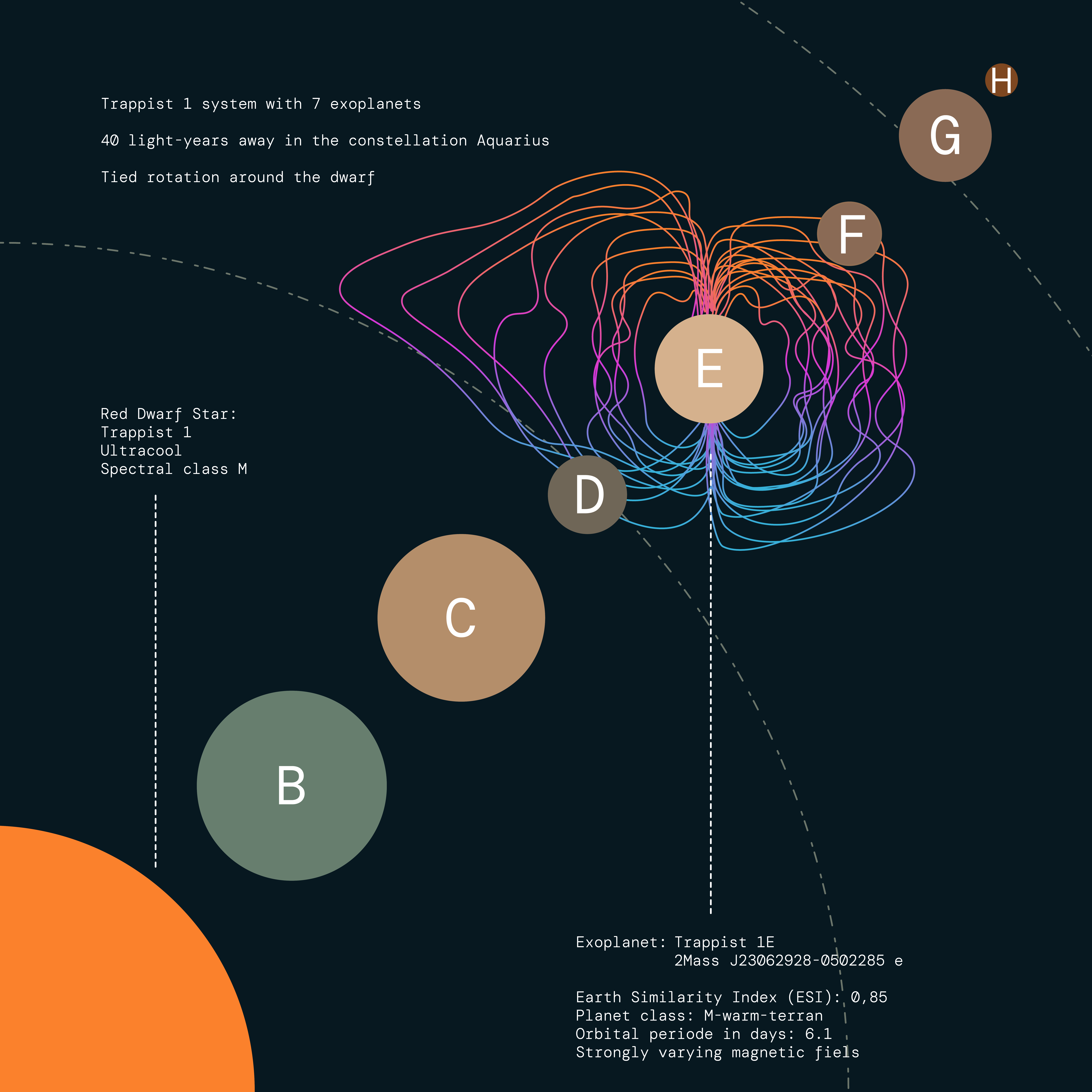
Extraterrestrial Base
Expansion of space infrastructure, industrialization and commercialization of space.
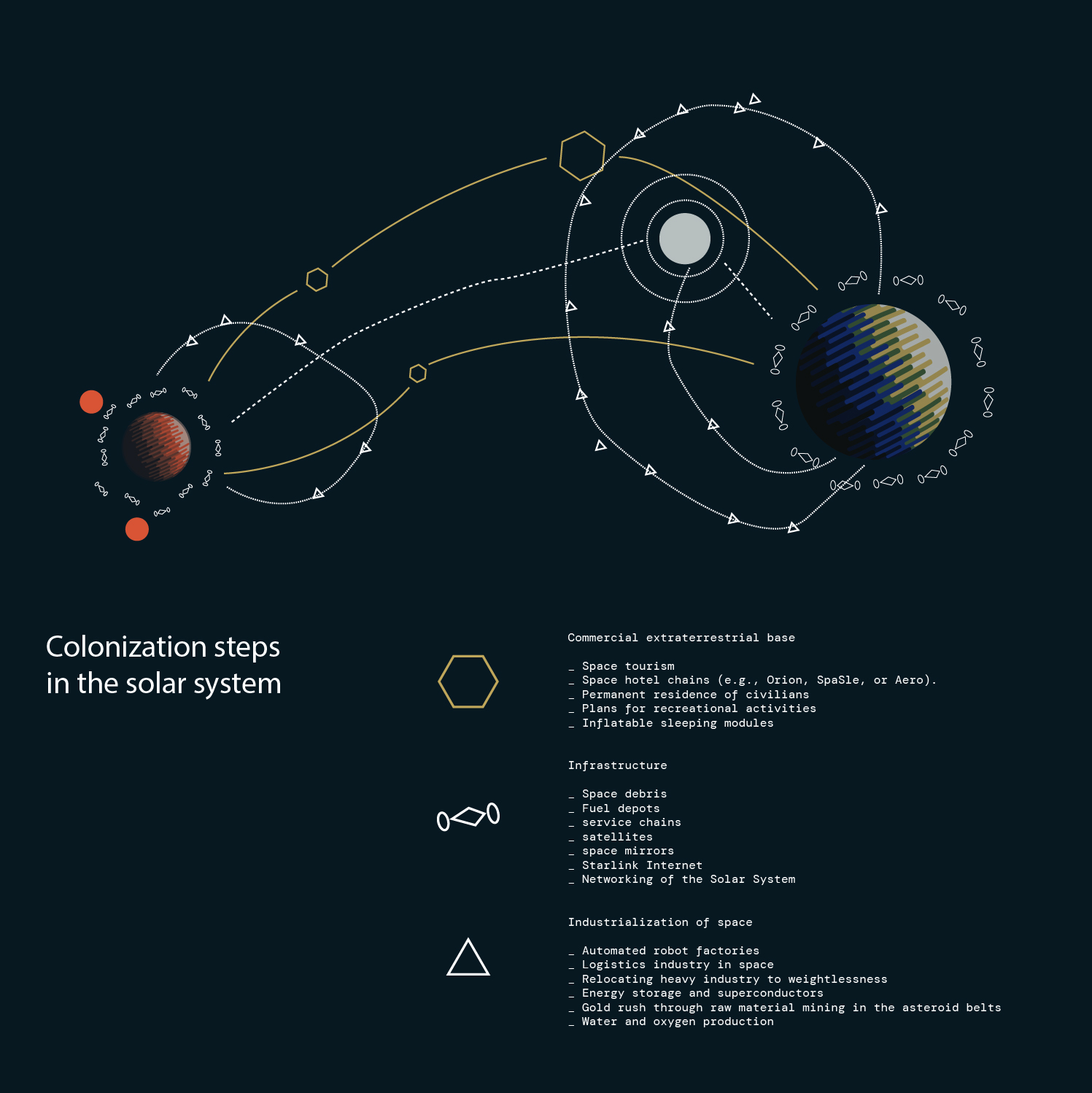
"You should never doubt that a small group of smart, committed citizens can change the world. Indeed, it is the only way that has ever succeeded."
Margaret Mead _ 1901 - 1978
Terraforming
Terraforming (word formation from the Latin word terra= earth and the English word forming = to form, reshape, shape) refers to the transformation of other planets into earth-like planets that can be inhabited by humans using various technical methods and concepts. The topic has become popular especially through science fiction.
The state of science today shows that Earth and Mars were much more similar over 3.8 to 3.5 billion years ago than they are today. The Mars missions of the last decades indicate that the planet must have been much wetter and warmer. Mars lost its atmosphere over time due to solar flares, liquid water evaporated and in the course of this the core cooled and solidified. A solid core inside a planet means that no magnetic field and therefore no sufficient protective shell can form around the planet. A goal of the Terraforming process must be accordingly an artificially induced global magnetic field, which protects the atmosphere from solar winds.

Method 1. Bombs
The polar caps of the northern and southern hemispheres, which have a large permafrost soil fraction, are bombarded with hydrogen or atomic bombs in order to initiate a rapid melting process.
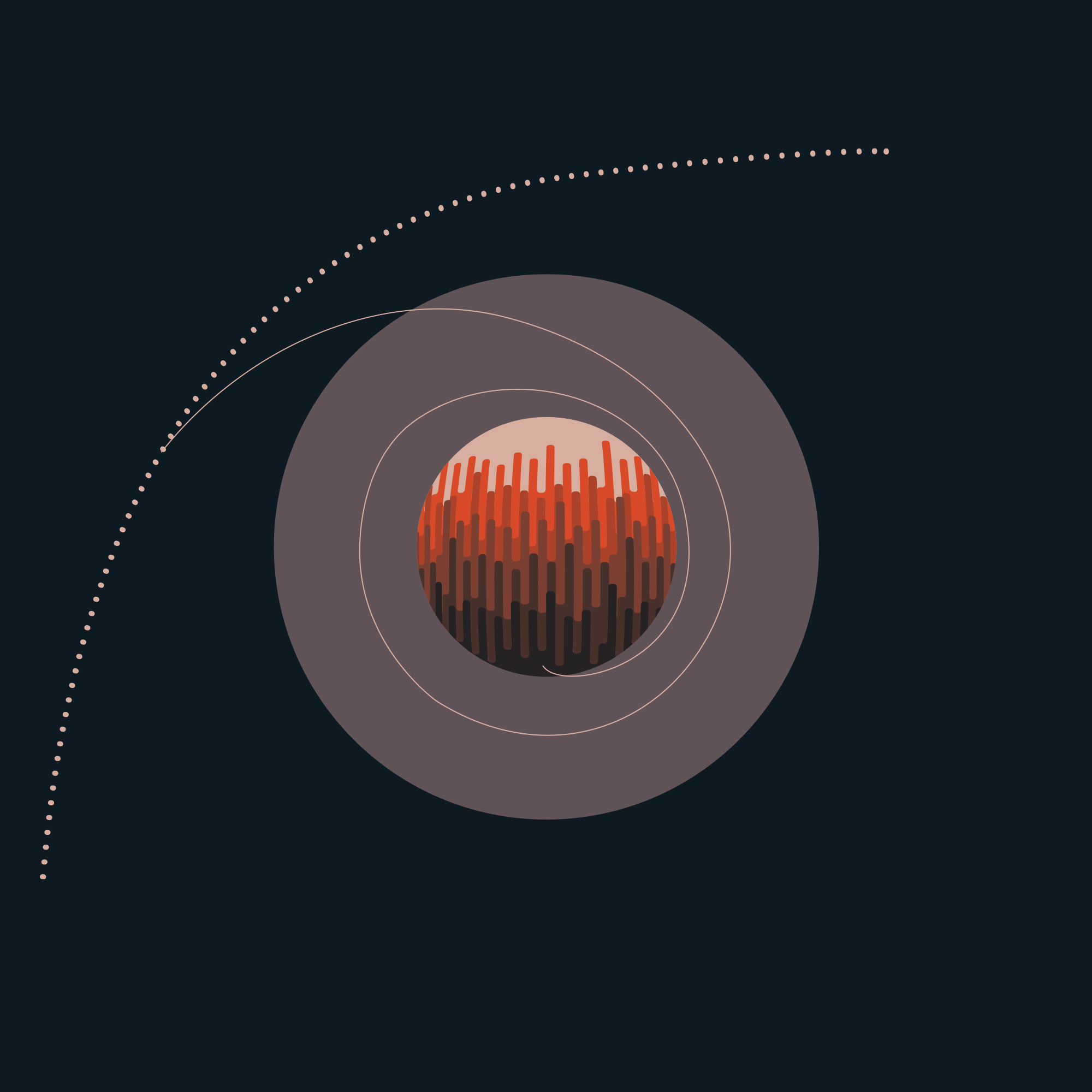
Method 2. Asteroids
Asteroids and comets that just barely touch the orbit of Mars thrown off track into the atmosphere of Mars using targeted deflection maneuvers, such as laser cannons. As the object is deflected and enters the atmosphere, it heats up, releasing heat as it hits Mars.
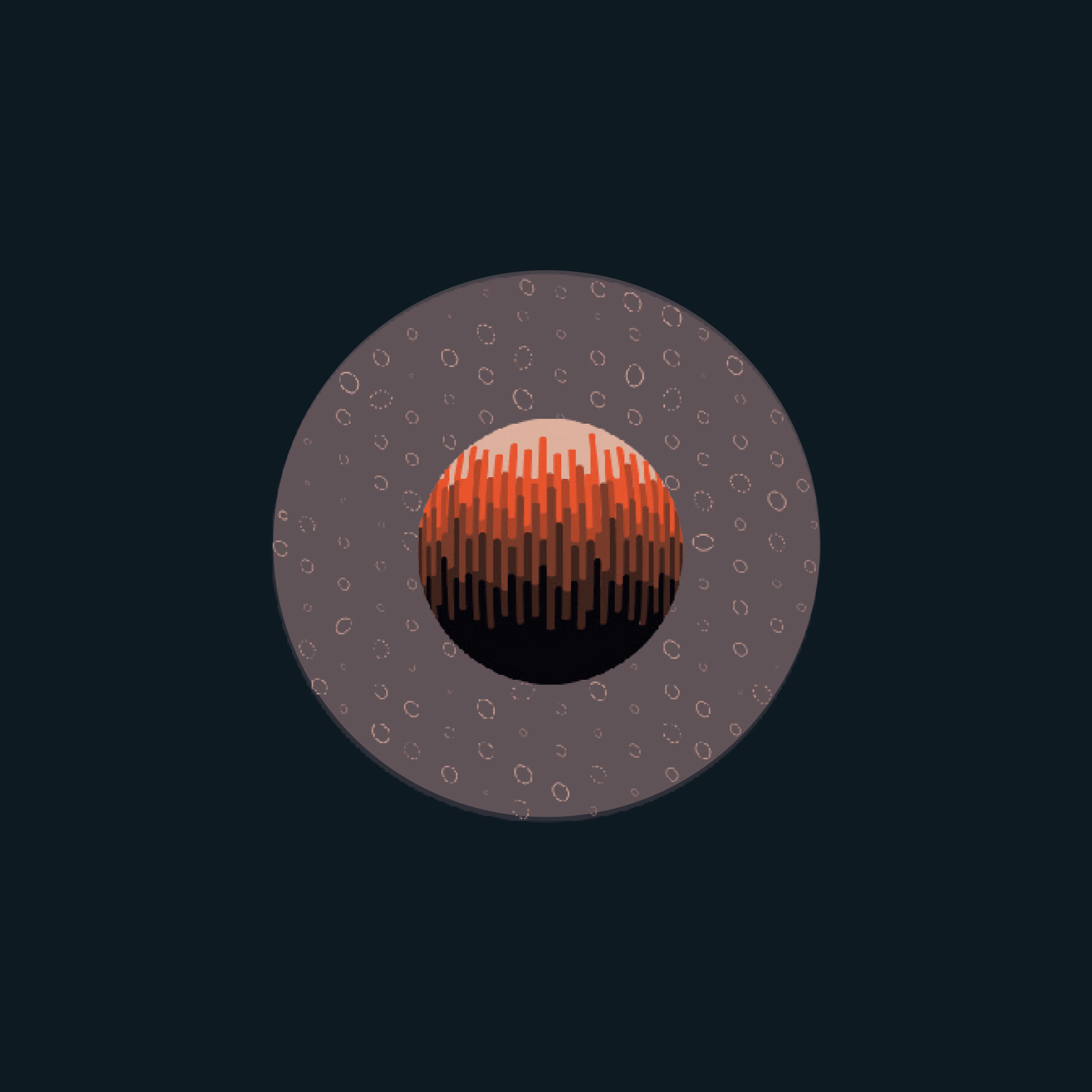
Method 3. Inoculation
"Inoculate" the atmosphere of Mars with methane and hydrogen to produce a natural greenhouse gas effect.
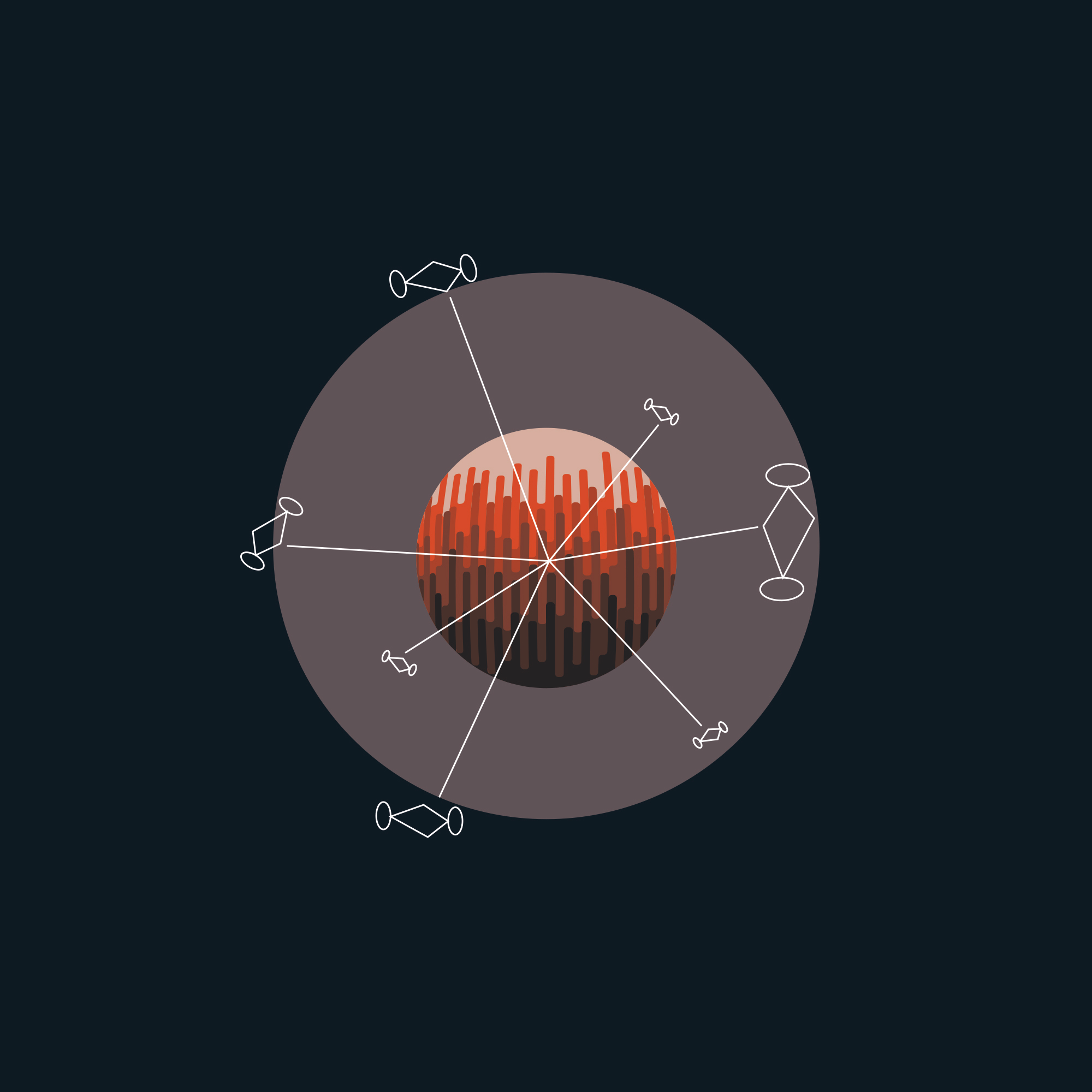
Method 4. Melting polar caps
Satellites equipped with large mirrors and solar panels orbit Mars to focus and concentrate sunlight on single points and melt the polar caps.
"If humans are indeed going to go to Mars, if we're going to go beyond, we have to learn how to live on other planetary surfaces, to use what we find there and bend it to our will,..."
Michael Griffin NASA Administrator _ 2007
Responsibility and impulses
What does it mean if life would develop on a target planet in a completely natural way, which would be perfectly adapted to the conditions of that planet? Would the human species have the right to reshape the planet according to its conditions, to take over and wipe out microbial life adapted to the original planet? Where do we draw the line in selecting target planets in other galaxies if we encounter technically underdeveloped life, but the planet would be suitable for a human life and terraforming process?
When we have terraformed Mars in a few centuries, which form of government, which legal system and which social structures will we form and adopt from Earth? Will we do everything "better" than on our planet or will we transfer our prevailing structures? Will there be a money and payment system or will we try a community based on sharing with each other? Will humans live as individuals or as a cohesive community? Who will own the space on Mars? Will oxygen and water be treated as capital, a means of payment, and in the end even as a wealth commodity?
HfG Offenbach Rundgangpreis 2022
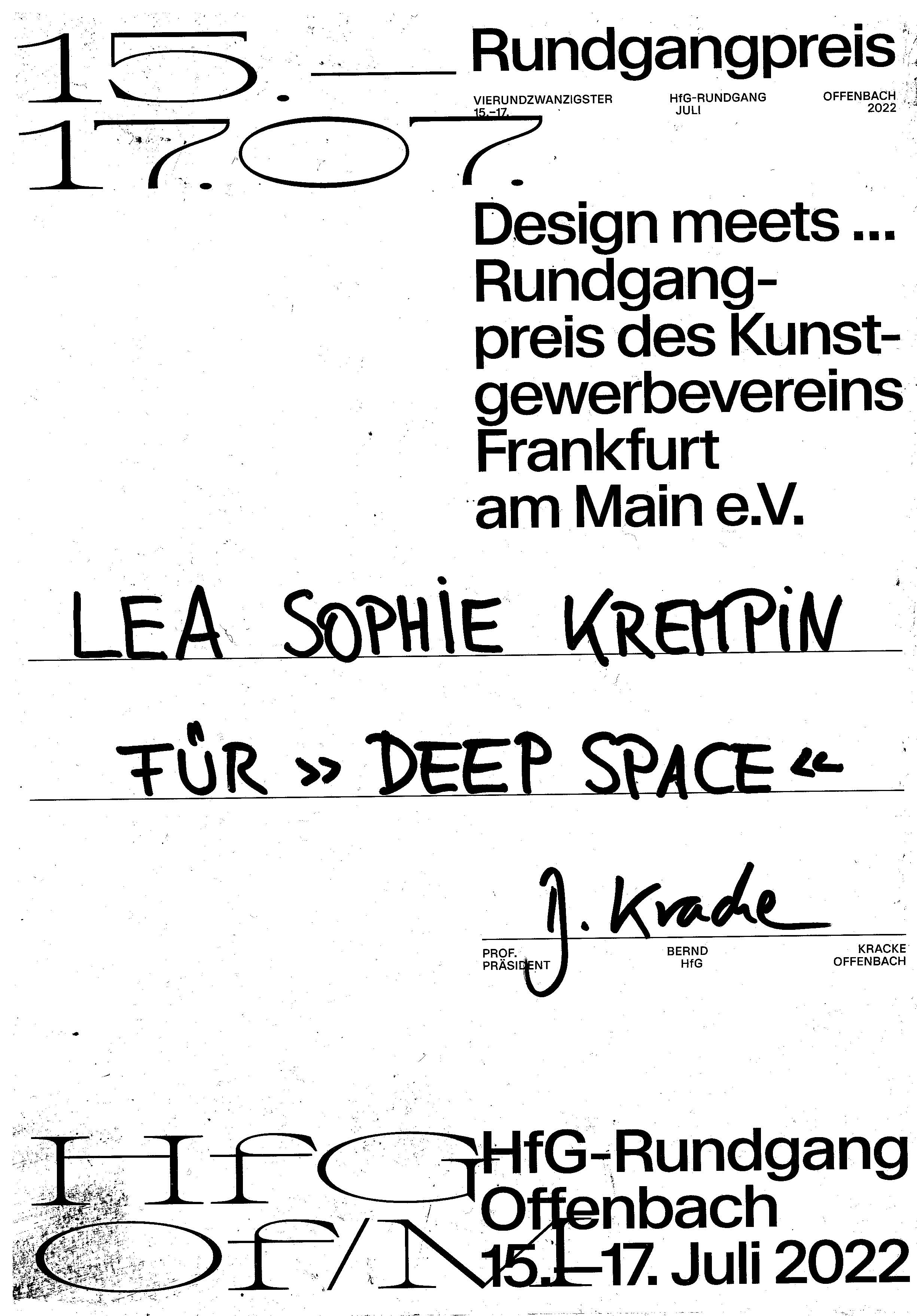
Jury justification
"Deep Space by student Lea Sophie Krempin with Prof. Lisa Borgenheimer in the Information Design department is a visualized vision of life on Mars. What convinced us about the work was the critical view of the present, our life on Earth, and the vision of a future on Mars. Lea Sophie Krempin is not only concerned with the question of "terraforming", the transformation of other planets into habitable earth-like celestial bodies by means of future technology. She also poses the moral question like appropriation of a planet that does not belong to us."
Visual Discovery Conference, Switzerland, 2022
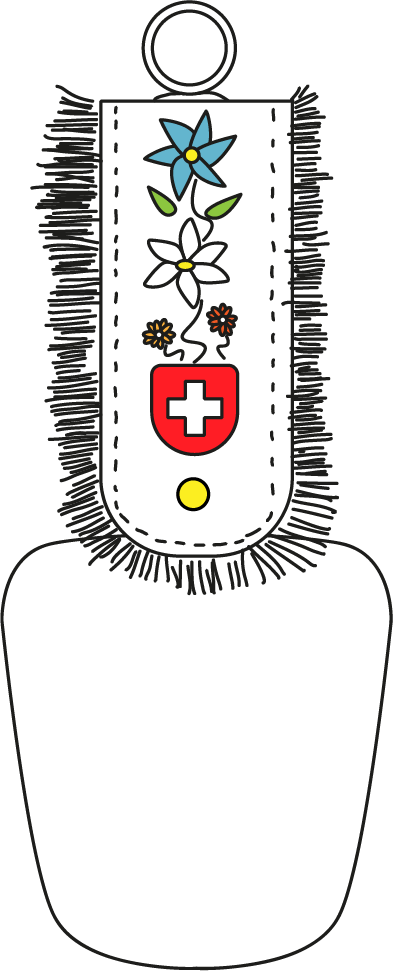
Visual Discovery Conference Competition
Awarded by the international jury during the Visual Discovery Conference in Switzerland for the best student work. The prize of the competition was a traditional Swiss cowbell.